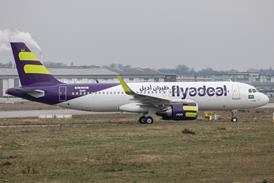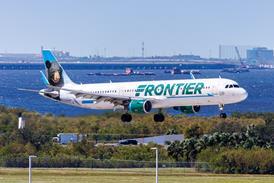The global market for fighter aircraft is poised for recovery after hitting its lowest point since the jet age began. This is the conclusion of the Teal Group in its latest report which will be released at Asian Aerospace today.
The analysts believe that European manufacturers will almost double their share of the world market but that the Lockheed Martin F-35 will dominate the market after 2011 unless European defence contractors merge.
A total of 2,951 combat aircraft valued at $139.6 billion (in 2002 US dollars) will be built worldwide in the 2002-2011 period, predicts Teal in its world fighter/attack aircraft production forecast which covers all combat aircraft over 9.080kg (20,000lb) maximum take-off weight. This includes all supersonic fighter aircraft plus the AV-8B Harrier.
The numbers indicate that the market is recovering from the lowest point since the advent of jet aircraft. A mere 175 fighters worth $7.2 billion were delivered in 2001.
This will rise to 193 aircraft worth $8.1 billion this year, the first sign of growth in more than four years. And the next 10 years look considerably better than the last 10 a total of 3,200 fighters worth $105.8 billion (also in 2002 dollars) were built between 1992 and 2001.
Forecasts
"Procurement holidays are ending. The market will continue its growth, doubling its size between 2002 and 2005," says Richard Aboulafia, lead analyst for Teal Group's World Military and Civil Aircraft Briefing, the 1,400-page monthly-updated competitive intelligence service, in which this and nine other consolidated forecasts plus 156 separate aircraft programme reports are published.
Because Europe's procurement holiday was longer, Europe's share of the fighter market will increase dramatically, from 18.9% in 1992-2001 to 35.4% in 2002-2011, as Eurofighter and Rafale series production begins.
This period is effectively a "window of opportunity" for European manufacturers, before the F-35 arrives.
Until recently, the biggest question hanging over the fighter market was the future of the US programmes, particularly the Joint Strike Fighter (JSF) competition that became Lockheed Martin's F-35. While the F-35 is still not completely secure, it looks relatively safe.
Boost
"Thanks to the post-11 September defence spending rise, and an increased recognition of the importance of air power, we don't see any major problems in funding the Boeing F-22, Boeing F/A -18E/F, and the F-35, with a few delays," notes Aboulafia.
The export standing of US fighter manufacturers will be further boosted by the ongoing US military actions. Weapons offered by a "hyperpower" look more attractive than those offered by passive countries. US weapons will benefit from upgrades, new doctrine, and other conflict-related improvements.
Aboulafia notes that "the availability of US forces, roaming the globe to provide backup, will be a further enhancement to US weapons sales."
Beyond the forecast period, Teal believes the future belongs to the F-35. "Assuming this programme goes ahead as planned, F-35 will allow US industry and its international allies to dominate the fighter market after 2015," said Aboulafia. "To avoid this fate, Europe's fighter makers must join forces, either with each other or with US partners.
Source: Flight Daily News























